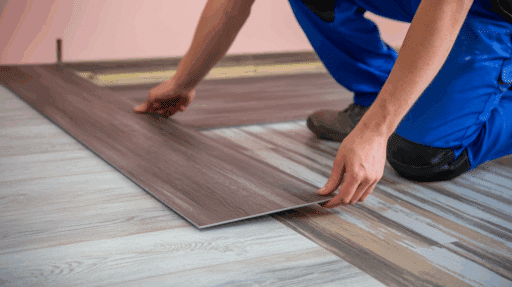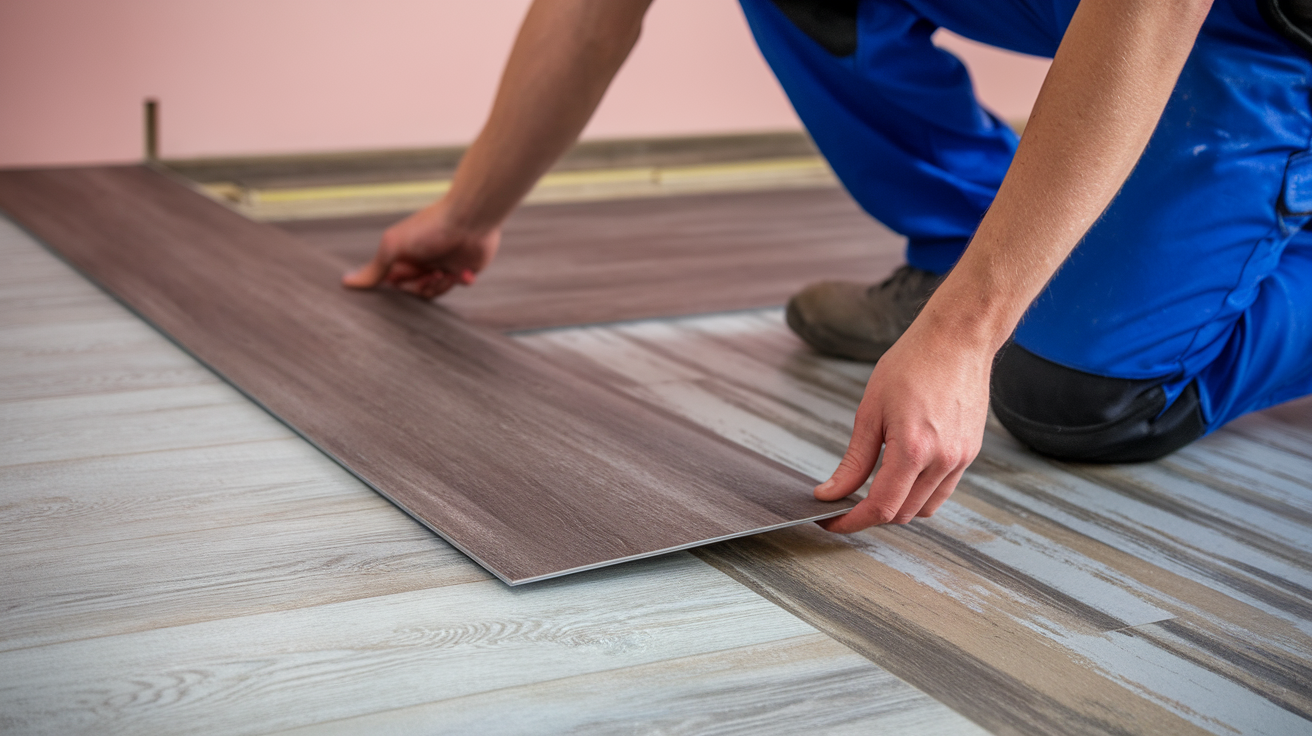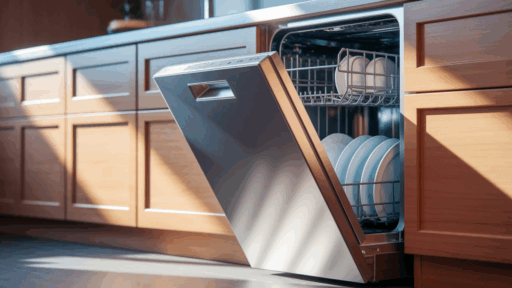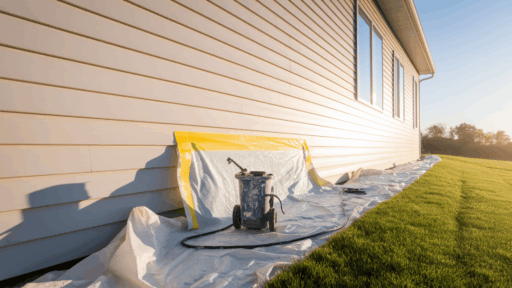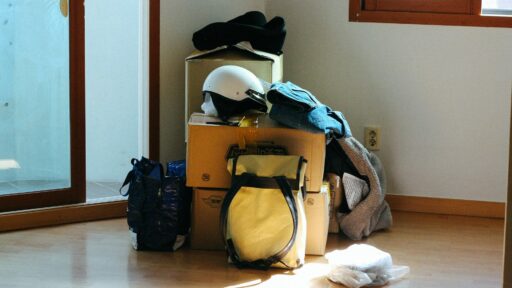You stare at your bathroom floor – those square, beige tiles from the 1990s stare back at you. You want something new, but the thought of ripping them out makes your wallet hurt and your weekend plans vanish.
“What if I just put new flooring on top?” you wonder, tapping the tiles with your foot.
It’s a common question many homeowners ask when faced with outdated tile. The good news? In many cases, yes, you can install new flooring over existing tile.
This blog will help you figure out:
- Which flooring types work best over tile
- How to check if your current tile can support new flooring
By the time you finish reading, you’ll know exactly whether covering your old tile is the right choice for your home.
I’ve helped hundreds of homeowners solve this exact problem, and I can guide you through the process, too.
Can You Install New Flooring Over Existing Tile?
The short answer is yes. In many cases, you can place new flooring right over your existing tile. I’ve seen countless homeowners save time and money with this approach.
But before you rush to buy new materials, let’s check a few things:
First, examine your tile floor carefully. Run your hand across it. Do you feel bumps or lips between tiles, cracks or chips, and tiles that move when you step on them?
If your floor is mostly flat and solid, you’re in good shape. Any loose or broken tiles need fixing before you start.
When you add a new layer of flooring, everything gets taller. This includes your ceiling height will decrease slightly. This usually isn’t a problem unless you have very low ceilings already.
Door clearance is often the bigger issue. Will your doors still swing freely over the new, higher floor? You might need to trim the bottoms of your doors to make them work.
Pros and Cons of Flooring Over Tile
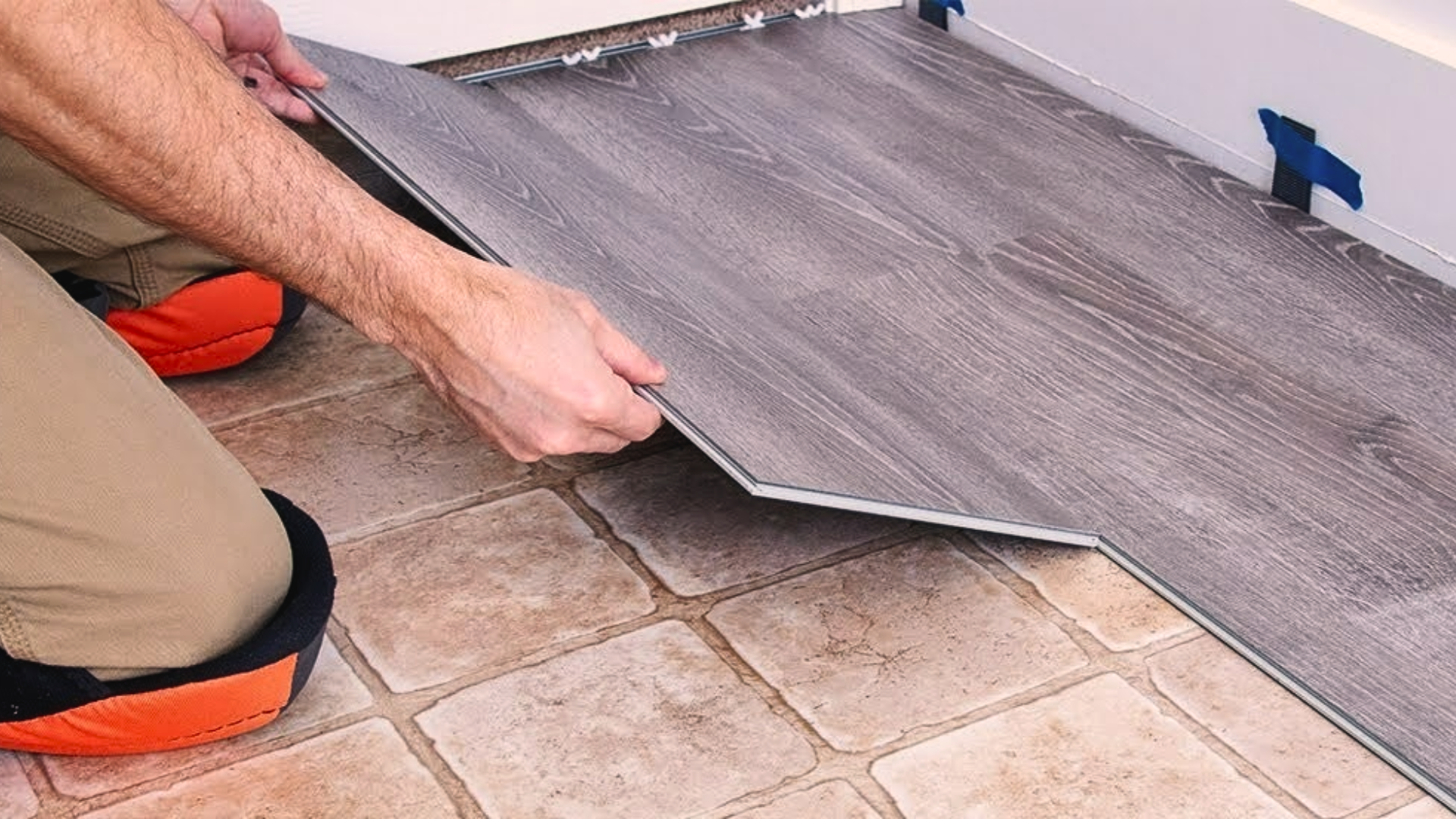
Let’s weigh what you gain against what you give up when you choose to cover your old tile rather than remove it. I’ve helped many homeowners make this decision, and these factors matter most:
| Good Things About Covering Tile | Not-So-Good Things About Covering Tile |
|---|---|
| You’ll save money | Your floor gets higher |
| The job finishes faster | Your floor must be flat |
| Your house stays cleaner | Not all new floors work well |
| You create less waste | Moisture problems can worsen |
| Less chance of finding surprises | You add extra weight |
Remember: The right choice depends on your specific situation. What works in your neighbor’s house might not work in yours!
Best Flooring Options for Going Over Existing Tile
When you’re ready to cover that old tile, not all flooring types work equally well. I’ve installed floors for over 15 years, and these options consistently perform best over tile:
1. Luxury Vinyl Plank (LVP)
LVP wins the popularity contest for good reason. It bends slightly, which helps it cope with minor bumps in your tile floor. Most quality brands come in at about 5-8mm thick, keeping the height increase minimal.
I recommend looking for an LVP with attached padding on the bottom. This built-in layer helps smooth out tiny tile flaws and reduces noise when you walk.
2. Laminate Flooring
If you want the look of wood at a lower price point, laminate can work well. The click-lock edges make it simple to install.
You’ll need to add a thin foam underlayment between your tile and the laminate. This helps level minor issues and stops moisture from coming up through grout lines.
3. Engineered Wood
Want real wood? Engineered wood gives you the genuine article without the thickness problems of solid hardwood.
The layers of plywood under the wood top make it more stable than solid wood. I usually add a good moisture barrier underneath since wood and water don’t mix well.
4. Carpet Tiles
For bedrooms or home offices, carpet tiles offer a smart solution. Each tile is separate, so you can replace just one area if it gets stained.
Self-adhesive versions stick right to clean tile – no extra glue needed. I’ve used these in rental properties where a quick, temporary update was needed.
Benefits of Installing Ceramic Tile Flooring
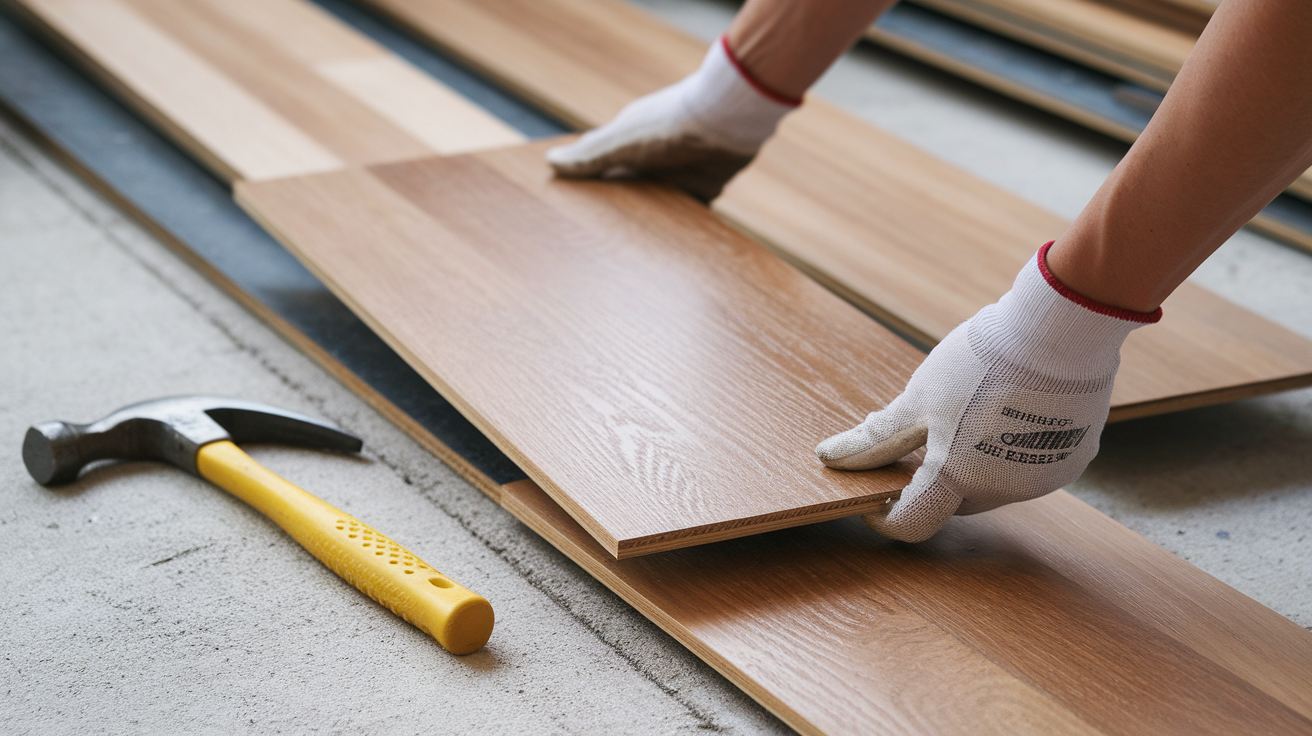
You might be looking to cover your old ceramic tile, but there are good reasons it was chosen in the first place. I’ve worked with flooring for years, and ceramic tile remains a top choice for many homes. Let’s see why:
- Lasts for Decades: Ceramic tile is incredibly durable and can withstand heavy foot traffic without showing wear or damage. It’s common to see tile that’s lasted for 40 years or more.
- Handles Water Well: Ceramic tile is perfect for areas prone to moisture, such as bathrooms and kitchens, as it resists spills and high humidity without warping or swelling.
- Easy to Keep Clean: Tile requires no special cleaners—simple sweeping and mopping with water or mild soap is enough to maintain its appearance.
- Stays Cool in Hot Weather: Ceramic tile remains cool underfoot, making it a great option for warmer climates where other flooring options like carpet or vinyl can feel too hot.
- Good for Air Quality: Unlike carpets, ceramic tile doesn’t trap allergens like dust mites or pet dander, making it ideal for families with allergies or asthma concerns.
Tips for Installing New Flooring Over Existing Tile
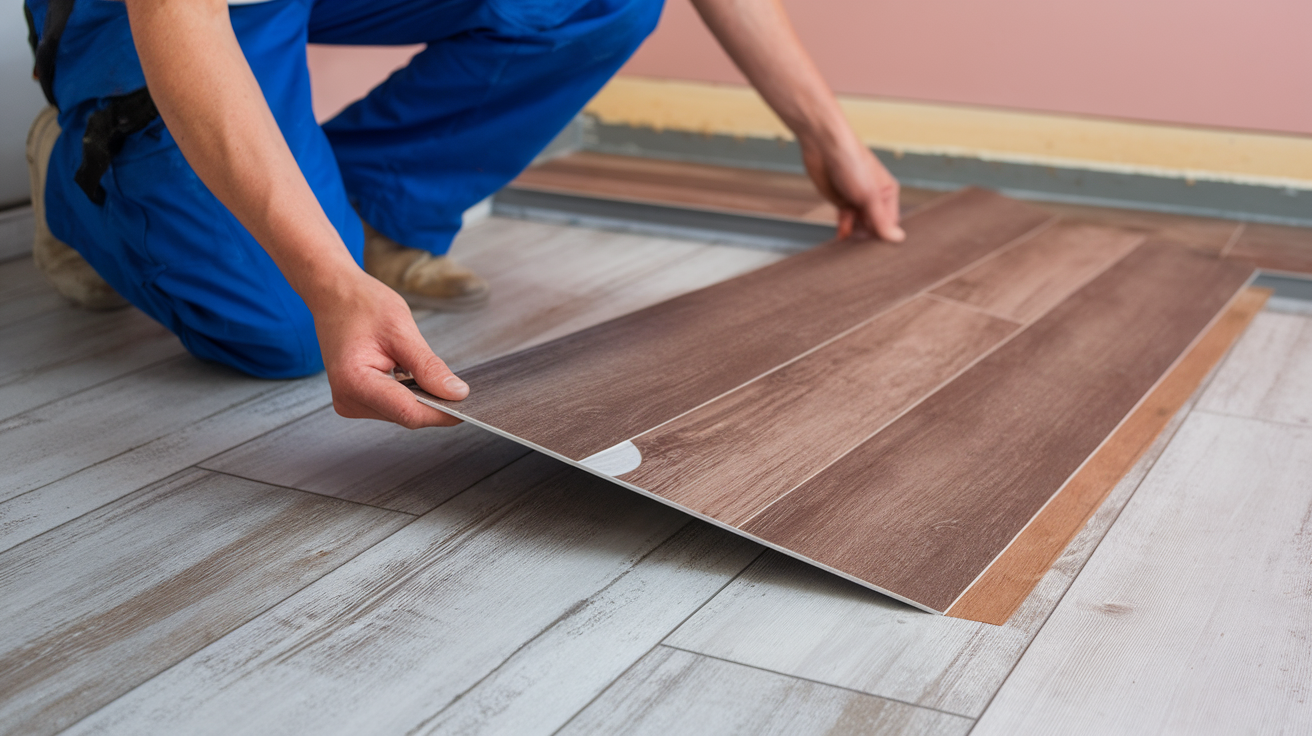
Getting ready to cover that old tile? I’ve done this job countless times, and these steps will help you get results that last. A little prep work now prevents headaches later.
1. Check and Fix Your Current Tile
Before you add anything new, take a close look at what you’ve got. Walk across the floor in your socks, feeling for loose tiles with your feet.
Press on each tile. Any movement? That’s a problem. Loose tiles must be reattached with thin-set mortar or removed and replaced.
Fill any cracks with epoxy designed for tile repair. For deep chips, use a two-part filler that dries hard.
2. Deal with Grout Lines
Large or deep grout lines can show through your new floor as lines or ridges. This is especially true with thin vinyl or laminate.
For shallow grout lines, a good underlayment might be enough. For deeper ones, consider using a floor leveler.
Mix up some self-leveling compound and pour it across your tile. Use a wide, flat trowel to spread it evenly. This fills in the low spots created by grout lines.
3. Clean Like You Mean It
Your new floor needs to stick to or lie flat on the tile beneath. Any dirt, grease, or soap residue will cause problems.
I start with a strong cleaner mixed for tile floors. Scrub with a stiff brush, paying special attention to corners and edges.
Rinse several times with clean water to remove all soap. Then let the floor dry completely; fans help speed this up.
4. Choose the Right Underlayment
Most new floors going over tile need some type of underlayment:
- For vinyl planks: Look for a thin (1-2mm) underlayment specifically made for vinyl.
- For laminate or engineered wood: Use a 2-3mm foam underlayment with a moisture barrier if you’re on a concrete slab.
- For floating wood floors: You’ll need a slightly thicker cushion (3-4mm) to help smooth out imperfections.
I always tape the seams of the underlayment with the recommended tape. This stops moisture from sneaking through the cracks.
5. Test Everything Before You Start
Before opening a single box of new flooring, swing all your doors to make sure they’ll clear the new, higher floor. You might need to trim the bottoms.
Check your transitions to other rooms. Will you need special transition strips to handle the height difference?
Measure your floor height against kitchen appliances. Will your dishwasher still fit when you’re done?
Conclusion
Yes, you can put new flooring over your existing tile! This approach works well when done with care and the right materials. I’ve seen countless homeowners successfully update their homes this way.
The key is in the preparation. Check that your tile is secure, fill those grout lines when needed, and clean thoroughly before starting.
Choose flooring that works well for this method, with luxury vinyl plank and laminate being top choices for most situations.
Remember that a bit of height increase is normal, so plan for door clearance and transitions to other rooms.
What I love about this method is how it saves you time, money, and mess compared to demolition. Your weekend project can truly be a weekend project and not a month-long ordeal!
Ready to refresh your space? With these tips in hand, you’re set to give your home the update it deserves without the usual headaches.

